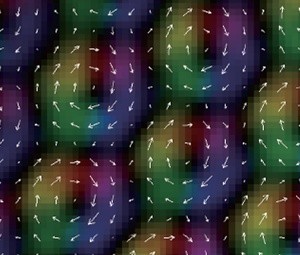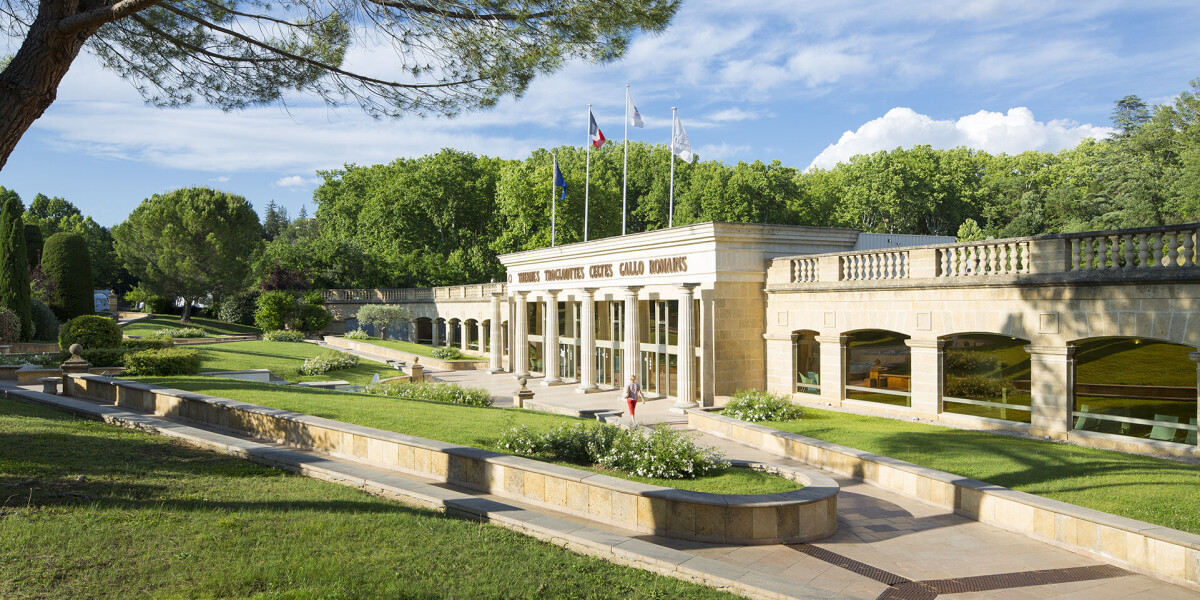
- Select a language for the TTS:
- UK English Female
- UK English Male
- US English Female
- US English Male
- Australian Female
- Australian Male
- Language selected: (auto detect) - EN
Play all audios:
Quasi-particles made up of a collection of electron spins can be ordered into a crystal lattice at near room temperature. Fig. 1: Spin map showing the formation of a skyrmion lattice in thin
films of iron–germanium at near room temperatureFrom Ref. 1 © 2011 Y. Tokura, X. Z. Yu Electrons are characterized by their mass, their charge and a third property called spin related to
their angular momentum. Electron spin is an ideal medium for manipulating, transporting and storing information, and its exciting potential has led to the rapid development of the field of
spintronics. In a solid, spins can also organize into complex but stable structures that behave just as if they were single particles. And, just as with real particles, they can be arranged
into periodic crystals. Yoshinori Tokura and co-workers from the University of Tokyo, the Japan Science and Technology Agency, the National Institute for Material Science and RIKEN in Japan1
have now created such a crystal at temperatures higher than achieved previously, and high enough to be used in spintronic devices operating at near room temperature. One example of these
strange quasi-particles is the skyrmion, in which the spins point around a series of concentric circles. This is similar to a map of the air flow in a hurricane, but in a skyrmion the spins
on the outside point up and those at the center point down. Scientists have predicted that a repeating lattice of these structures — a skyrmion crystal (pictured) — could prove to be
advantageous for spintronics. “Skyrmions couple strongly with electromagnetic fields and can therefore give rise to unusual electromagnetic properties,” says Tokura. Researchers have
previously seen the skyrmion-crystal state in transition-metal–silicide materials at temperatures below 40 K. But crystals at or near room temperature are needed if the idea is to be applied
to real devices. Tokura and his colleagues have now achieved this for the first time using thin films of iron–germanium — a material that is similar to those studied previously but
maintains the necessary magnetic structure at up to 280 K. One technology that could potentially benefit from this development is magnetic random access memory, in which information is
stored in terms of the magnetic properties in small domains. “It has recently been reported that the electric-current threshold for the motion of a skyrmion crystal is smaller than that for
a magnetic domain wall,” explains Tokura. REFERENCES * Yu, X. Z., Kanazawa, N., Onose, Y., Kimoto, K., Zhang, W. Z., Ishiwata, S., Matsui, Y. & Tokura, Y. Near room-temperature formation
of a skyrmion crystal in thin-films of the helimagnet FeGe. _Nature Mater._ 10, 106–109 (2011); doi:10.1038/nmat2916 Article CAS Google Scholar Download references ADDITIONAL INFORMATION
This research highlight has been approved by the author of the original article and all empirical data contained within has been provided by said author. RIGHTS AND PERMISSIONS Reprints and
permissions ABOUT THIS ARTICLE CITE THIS ARTICLE Spintronics: Little crystallized hurricanes. _NPG Asia Mater_ (2011). https://doi.org/10.1038/asiamat.2011.32 Download citation * Published:
28 February 2011 * DOI: https://doi.org/10.1038/asiamat.2011.32 SHARE THIS ARTICLE Anyone you share the following link with will be able to read this content: Get shareable link Sorry, a
shareable link is not currently available for this article. Copy to clipboard Provided by the Springer Nature SharedIt content-sharing initiative



![[withdrawn] york council for voluntary service](https://www.gov.uk/assets/static/govuk-opengraph-image-03837e1cec82f217cf32514635a13c879b8c400ae3b1c207c5744411658c7635.png)





